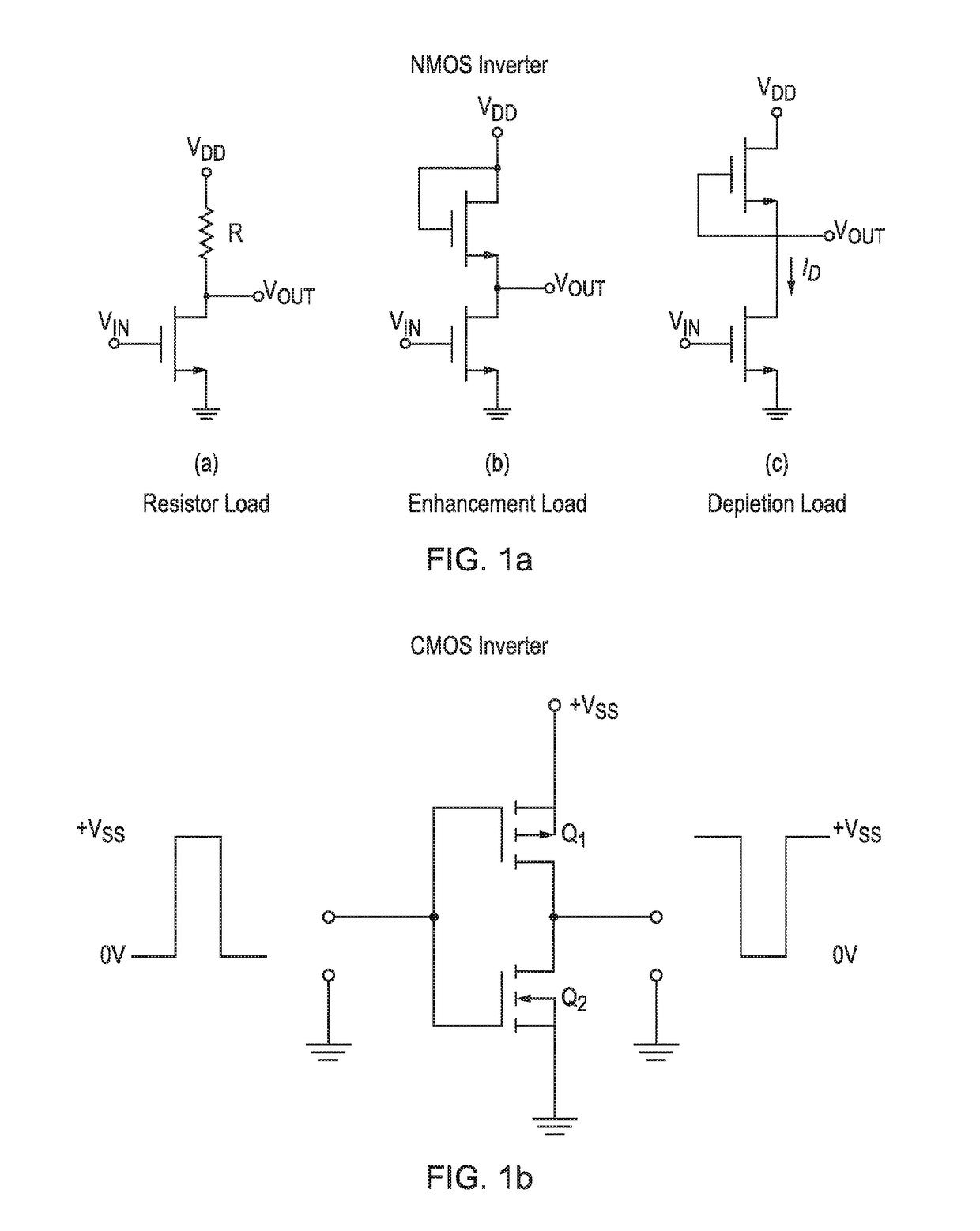Electronic circuits
a technology of electronic circuits and circuits, applied in logic circuits, electric pulse generators, pulse counters, etc., can solve problems such as difficult combining the two into a single manufacturable process, mismatch in achievable performance, and critical lack of robust cmos capability
- Summary
- Abstract
- Description
- Claims
- Application Information
AI Technical Summary
Benefits of technology
Problems solved by technology
Method used
Image
Examples
Embodiment Construction
[0061]FIG. 4 illustrates an inverter embodying the present invention, and incorporating the NCMOS concept / technology invented by the present inventors.
[0062]The device comprises four NMOS transistors (Q1, Q2, Q3, and Q4) and two loads R1 and R2, which can also be described as polarising load elements (and can take the form, in certain embodiments, of resistors, N-type enhancement loads or N-type depletion loads). Essentially it is a hybrid between NMOS and CMOS, hence the name NCMOS.
[0063]In the terminology of claim 1, Q1 is the first FET, Q2 is the second FET, and so on. The first supply rail 3 is Vdd in this example, and the second supply rail 4 is Vss or ground. Input terminal 1 and output terminal 2 are labelled, and the source, drain, and gate terminals of each of the FETs are labelled, as S, D, and G respectively. The connections between the various terminals are as defined in claim 1. In this example, the respective connections between the source and drain terminals of the fi...
PUM
 Login to View More
Login to View More Abstract
Description
Claims
Application Information
 Login to View More
Login to View More - R&D
- Intellectual Property
- Life Sciences
- Materials
- Tech Scout
- Unparalleled Data Quality
- Higher Quality Content
- 60% Fewer Hallucinations
Browse by: Latest US Patents, China's latest patents, Technical Efficacy Thesaurus, Application Domain, Technology Topic, Popular Technical Reports.
© 2025 PatSnap. All rights reserved.Legal|Privacy policy|Modern Slavery Act Transparency Statement|Sitemap|About US| Contact US: help@patsnap.com



